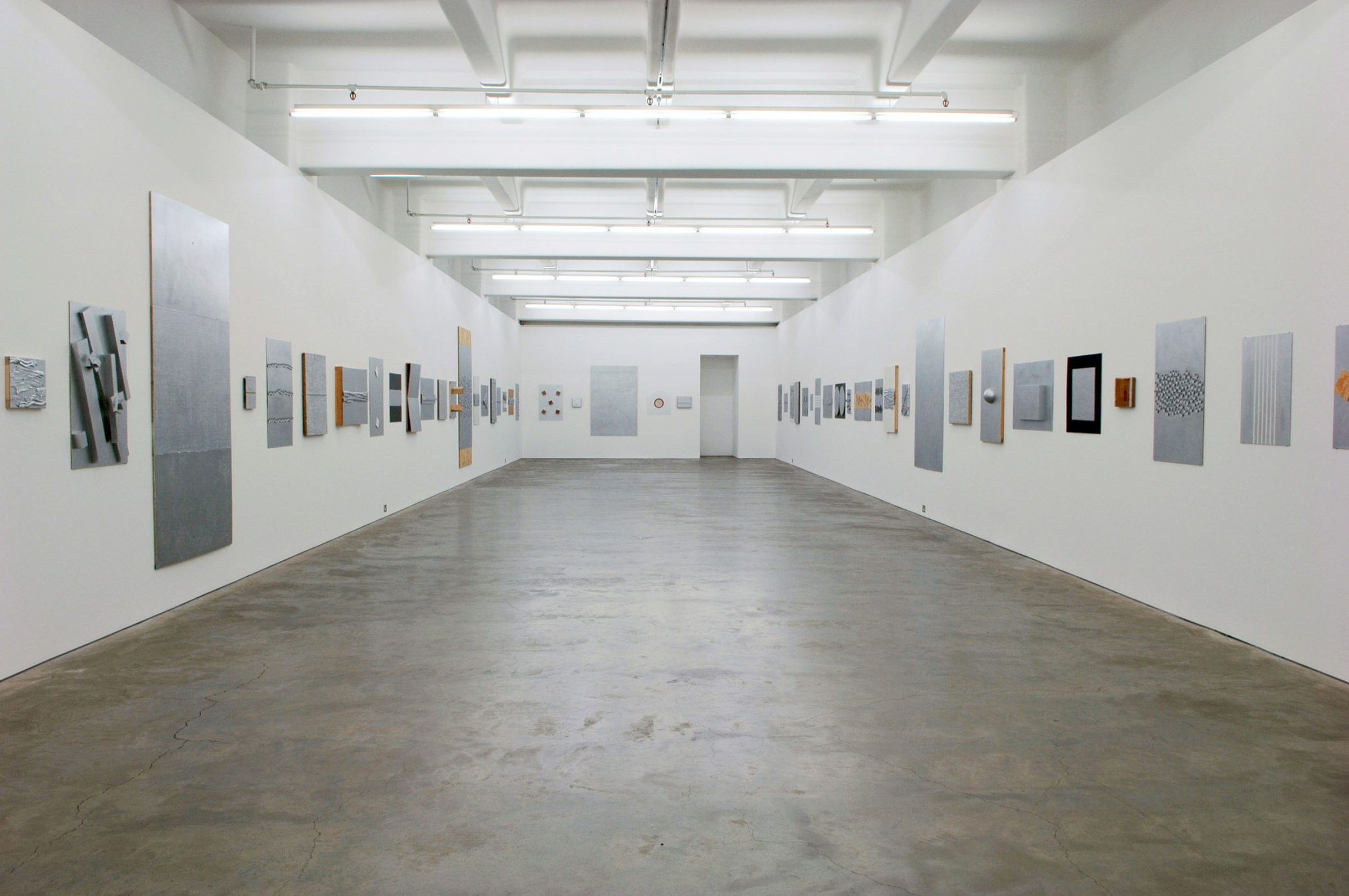ANNA SCHWARTZ PROJECTS
ANNA SCHWARTZ GALLERY TO CLOSE AND REOPEN AS NEW ENTITY: ANNA SCHWARTZ PROJECTSAfter four […]
Read MoreBefore I met John Nixon I had already seen John Nixon. John was the subject of a portrait by Jenny Watson that was exhibited at Georges’ Gallery, Melbourne which was on the upper floors of the department store. John was placed like a Barrett Newman stripe in the middle of the canvas wearing an altogether colourful shirt with exotic birds and foliage and faded blue jeans. He was placed in a monochrome of bright Cadmean yellow. The thrilling austerity of the background, a gesture to John’s own chromatic minimalism, inspired me to go home and paint a series of similarly reduced works. I got low grades for the effort. I think this was 1975.
A bit later, when John visited the Arts Bookshop, a famously important place for all artists wanting the most recent international magazines and journals, flown in at high speed and cost by the proprietors Elly Fink and Gilda Rudzki, and where I worked, he cut a dash in a Mao blue outfit of coveralls. Minimalist, monochromatic. The uniform was an indication that he was a man at work pursuing his diligent modernism in a labouring kind of unheroic approach. He was always dressed the same and I was taken with the singularity of his sartorial statement.
It became clear that certain artists always wore the same thing. Robert Rooney a plain pressed shirt with ordinary pants; Aleks Danko, also inclined to Mao blue, dressed in coat and workman’s cap; Howard Arkley had a jaunty striped blazer, school type, and so forth.
John Nixon
EPW, 1987–89
Installation view, City Gallery, Melbourne
Even though John was from Sydney, he was part of a push that curator Daniel Thomas called Melbourne Cool. Artists collected around him like the planets of our solar system do the sun, drawn into his charismatic definition of art and life, work and life mantra and example. They were not necessarily all striving for the quotidian modernism that John followed. One of his great qualities was his support of many different approaches. But the underpin was conceptualism.
I wrote a review of John Nixon’s work in the first issue of FASS, our university attempt at engaging with contemporary art. I made it a string of reference words, all in upper case. I tried for an alphabetic precession … CATHOLICISM, CONCEPTUALISM, CONSTRUCTIVISM, CRUCIFIX, MALEVICH, MODERNISM, and so forth. I was pretty nervous about it. When Paul Taylor asked me to come work with him on Art & Text he told me John thought it the best review of his work thus far. I was very encouraged by that. Paul also asked me what I thought about John’s work. Was he a Romantic, a Postmodernist, a Modernist, a Conceptualist, a Minimalist, a Dadaist? I said I thought he was all those things, but in particular I thought he had a romantic approach to the anti-romanticism that formed the basis of his radical modernism. I still think that’s true.
Even though the work-to-rule formulas remained steady and sturdy throughout John’s output his work could also accommodate certain theoretical drifts. When postmodernism was at its high point and music had taken a New Romantic turn, John’s monochromatic project provided a platform for the found object and was briefly embraced by the postmodern flip.
John Nixon
EPW: Silver, 2006
Installation view, Anna Schwartz Gallery
I remember his work in Vivienne Shark LeWitt’s exhibition The End of Civilisation Part II: Love Among the Ruins, a black rose affixed to a black monochromatic painting. Like many of his object paintings, this one seemed to have its particular semiotic and landed neatly into a postmodern decadence, but could just as easily escape this fleeting dalliance to settle back to a more conceptual intent. In Paul Taylor’s Tall Poppies exhibition, John created an installation with grand piano, a bucket of rust-coloured potatoes on top and a cluster hang of works with monochromatic, cross paintings. Settled on the piano and bucket were a hammer and scythe, a reference to Russian Constructivism and work ethic. It was stimulatingly total in its historical capture.
John was always around. He was a participant. He made things happen for other artists. He mentored the artists who collected around Store 5, he launched many a career through his work at Art Projects and the IMA in Brisbane and as a teacher. His own work, now international and well established, was regularly accessed at Anna Schwartz Gallery and in Sydney at Sarah Cottier. So it came as a surprise when I offered John the opportunity to use ACCA’s big Kunsthalle space to make his own project, that Anna Schwartz told me, just before the opening, it was his first big institutional exhibition in Australia. That seemed remarkable for so central a figure.
John made his biggest-ever orange monochrome painting and installed it on the long wall. Opposite he arranged a selection of works from his EPW (Experimental Painting Workshop) and added two plywood trestle tables holding paintings. It was a Gesamkunstwerk – sustained, stable and endless.
New Zealand is lucky. The Auckland Art Gallery has a very good collection of John Nixon works, their own and those held in the Chartwell Collection. New Zealand embraced John and his practice and this influence is clear. John’s life work was to make manifest ideas through his every-day, work-to-rule system with its adherence to colour, materiality and restraint. Nothing superfluous. Everything purposeful to the unending experimentation of combination. An exuberant dazzling practice within set limits. Joyful, vivacious, textured, situated. John created a rigorous and sustained body of work that kept alive the celebration of infinity in pursuit of the gestal.
Juliana Engberg was the commissioning curator of John Nixon: EPW at the Australian Centre for Contemporary Art, Melbourne, 2004.
This essay is reproduced courtesy of Auckland Art Gallery Toi o Tāmaki

